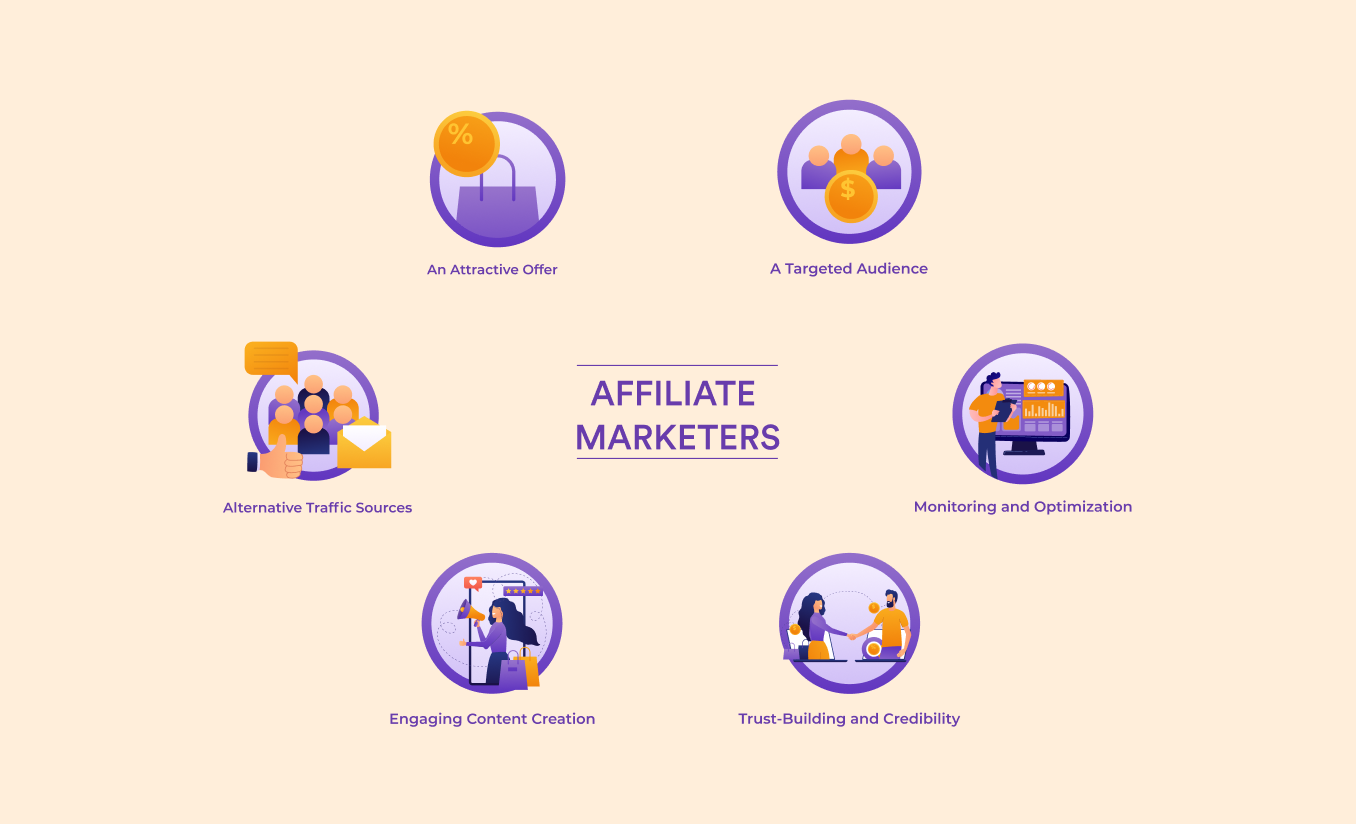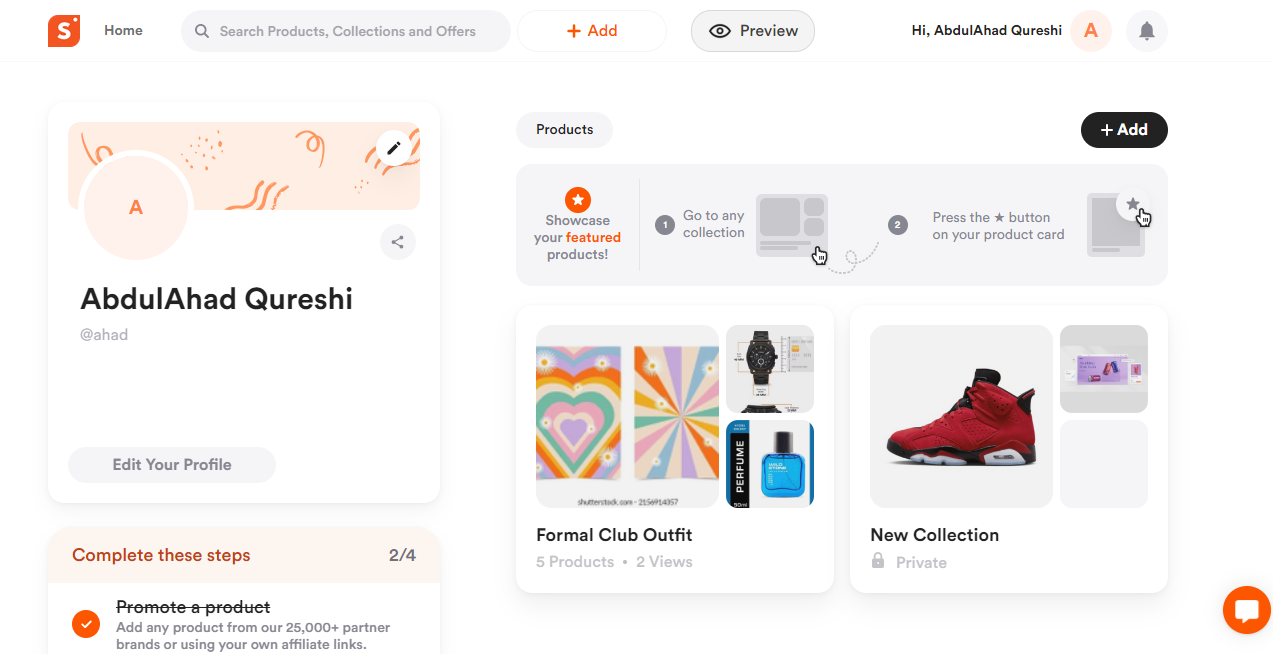No Website? No Problem! Mastering Affiliate Marketing Without a Website
Affiliate marketing without website? Seems like an impossible task, but it’s not. It’s doable, and here's how. The top 10 tips for no-website affiliate marketing.

Affiliate marketing, a realm where you can embrace the freedom to work from anywhere in the world. You might be wondering, with the internet saturated and websites aplenty, does affiliate marketing still hold its ground, isn’t affiliate marketing already dead?
The affiliate marketing industry is soaring, projected to reach a staggering market size of $27.78 billion by 2027. Now, that's a slice of the pie you wouldn't want to miss!
So, here's the exciting part – you're eager to dive into this lucrative world of passive income, to secure those delightful commissions for yourself. There's only one tiny hiccup – you don't have a website, and the thought of creating one might seem daunting.
But here's the secret: You can absolutely conquer affiliate marketing without a website!
Sounds impossible?
Fear not, for it's not only possible but also a strategy used by many savvy marketers. This comprehensive guide is all about unraveling the secrets of affiliate marketing without the need for a website or a hosted web page. We'll walk you through step-by-step, showing you the ropes and ensuring you're ready to take on this adventure.
Let's seize this opportunity and master the art of affiliate marketing without the traditional website barrier. Get ready to unleash your potential and carve a path to success in this ever-thriving industry!
What Do You Need to Become an Affiliate Marketer?
Becoming a successful affiliate marketer doesn't necessarily require a traditional website, but it does demand a few key ingredients. Let's take a closer look at what you'll need to kickstart your affiliate marketing journey without a website.

A Targeted Audience
The cornerstone of affiliate marketing success lies in connecting with the right audience. You'll want to engage with people who share an interest in the niche or topic related to the products or services you plan to promote. Utilize social media groups, forums, email lists, and other online communities to find and build your audience.
An Attractive Offer
To thrive as an affiliate marketer, you must align your offers with your audience's needs and preferences. Seek out high-quality affiliate products or services that genuinely solve problems or fulfill desires. Remember, authenticity and relevance are the keys to winning your audience's trust.
Alternative Traffic Sources
Without a website, you'll need to explore other avenues to drive traffic to your affiliate offers. Social media platforms, such as Facebook, Instagram, Twitter, and Pinterest, can serve as powerful channels to reach your target audience. Additionally, consider using email marketing, YouTube videos, podcasts, or even guest posting on other websites to expand your reach.
Engaging Content Creation
Since you won't have a central website to host your content, your focus will shift to creating captivating content on external platforms. Craft compelling social media posts, create attention-grabbing videos, write informative articles for guest posts, and craft engaging email newsletters to attract and retain your audience.
Trust-Building and Credibility
As an affiliate marketer, establishing trust with your audience is paramount. Engage in authentic conversations, offer valuable insights, and promote products or services you genuinely believe in. Building credibility will boost your chances of generating conversions and earning commissions.
Monitoring and Optimization
Keep a close eye on your affiliate marketing efforts without a website. Track your performance metrics, such as click-through rates, conversion rates, and sales, and use the insights to optimize your strategies continually. Testing different content formats, promotional methods, and traffic sources can help you refine your approach over time.
Remember, while not having a website might present some unique challenges, it also opens up creative opportunities to reach and engage with your audience. By leveraging various online platforms and employing effective marketing techniques, you can thrive as an affiliate marketer, even in the absence of a traditional website.
Why Do Affiliate Marketers Need a Customized Landing Page?
Now that you understand the essential elements for starting your affiliate marketing journey without a website, let's explore why a customized landing page becomes a crucial asset in your arsenal. While affiliate marketing without a website opens up diverse channels for promotion, a landing page can be the missing link to boosting your conversions and establishing credibility.
Here are some prominent benefits of having a landing page for your affiliate products.
1. A Persuasive Pitch for Your Offers:
- A landing page acts as your virtual sales representative, highlighting the features and benefits of your affiliate offers.
- Engaging copy and eye-catching imagery create a compelling pitch, convincing your audience that the products or services you promote are a perfect fit for their needs.
2. Seamless Linking from Various Platforms:
- Direct linking from social media platforms or other channels might appear less natural and less appealing to your audience.
- A customized landing page provides a seamless transition, making the affiliate link appear more trustworthy and increasing the likelihood of clicks and conversions.
3. Building an Email Marketing List:
- Utilize your landing page as a lead capture mechanism by integrating a lead form.
- Building an email marketing list allows you to nurture relationships with your audience and send targeted affiliate offers directly to their inbox, fostering higher conversion rates.
4. Transparency and Trust:
- Transparency is crucial in affiliate marketing, and a landing page helps build that trust with your potential customers.
- By providing clear-cut details and honest information, you create a transparent experience that resonates with your audience and encourages them to make informed decisions.
5. Maximizing Return on Investment (ROI):
- Effective landing pages enable you to generate traffic through paid advertising channels like Google Ads.
- With landing pages, you can optimize your ad campaigns, gather essential information about your audience, and tailor your efforts for maximum conversions.
6. Creativity and Tailored Design:
- Customize your landing page design to be as creative as you like, while maintaining a concise and attractive presentation of information.
- An aesthetically pleasing design and compelling copywriting contribute to an improved user experience and higher conversion rates.
Customized landing pages are pivotal in elevating your affiliate marketing strategy without a traditional website. They provide a platform for effectively promoting affiliate products, fostering trust, and increasing conversions.
Through creativity and a clear understanding of your audience's needs, a landing page becomes a powerful tool to succeed in the competitive affiliate marketing world.
In the next section, we’ll share how you can create a landing page and do affiliate marketing without a website.
Your Blueprint to No Website Affiliate Marketing with Shopper.com
As you've discovered, a well-designed landing page is a must-have when it comes to showcasing your affiliate products. While there are various tools like Clickbank, Leadpages, and Mailerlite available, none make it easier than Shopper.com.
Let's break down the simple steps to create a landing page with Shopper.com:
Step 1: Create An Account
The first step is to create a free account and claim your username. For creating an account -
- Visit https://www.shopper.com/ and in the text bar,
- Enter a username in the text bar on the home screen.
Choose a unique username that hasn't been claimed by any other creator. If you're not sure about the availability of your chosen username, the platform will let you know instantly.
What's impressive is that signing up for a Shopper.com account won't cost you a dime. However, if you're hungry for even more opportunities and features, consider exploring their premium plans starting at just $39.99 per month.
The premium version opens up a world of possibilities, allowing you to leverage features like Custom Domain, Broken Link Alerts, API Access, and more.

For a detailed breakdown of the premium features make sure to check out our guide on How to Get Started with Shopper.com as a Creator?
Step 2: Adding Products to Your Shopper.com Page

With your Shopper.com account up and running, it's time to add those enticing affiliate products to your page. As a Shopper.com user, you have two options for adding products with affiliate links:
Method 1: Adding a New Product With Search
Follow these simple steps to add products directly from the search bar:
- Log in to your Shopper.com admin panel and click on the "+Add" button in the header. From the drop-down menu, select the "Product" option.
- You'll find a search bar where you can enter the name of the product you want to recommend to your audience. For example, type "Nike Air," and you'll receive relevant suggestions.
- Choose the product you wish to promote and earn affiliate commissions upon a sale. To refine your search results, you can use the Country, Affiliate Status, and Store filters.
Method 2: Adding a New Product With a Product URL
While the first method showcases the latest platform updates, the second method follows the traditional approach. Here's how you can add your favorite products using the product URL:
- Click on the "+Add" button and select the "Product" option from the admin panel's home screen.
- You'll see the same search bar as in method 1. Instead of typing the product name, directly copy and paste the exact URL from a store.
- For instance, if you want to add Nike's Air Jordan 6 Retro to your Shopper page, visit Nike's official website, locate the product, and copy its URL. Then, paste the URL into the search bar. Shopper.com will automatically fetch the product details from the provided URL.
Once you've added the product, you'll be redirected to the edit product page, where you can enter essential details.
As a Shopper.com creator, you gain access to an extensive affiliate partnership with over 25,000 brands. This vast pool of affiliate programs empowers you to curate a diverse selection of products for your audience, catering to their unique interests and preferences.
Now that you've learned how to create a landing page showcasing your affiliate products, let's take it up a notch and make it even more visually appealing and organized using the Collection feature on Shopper.com.
The Collection feature allows you to group products that share a common category, making your landing page cleaner and more user-friendly. Imagine you're promoting trekking boots, backpacks, walking poles, and head torches – you can neatly list them under a collection named "My Trekking Tools."
This clever organization enables your customers to find all the essential trekking gear conveniently listed on a single, cohesive page.
Let’s see how you can create collections for the products you’re recommending.
Step 3: Creating Collections
Creating collections for your Shopper.com page is a breeze. Here's a quick guide to get you started:

Visit the home screen of your Shopper's admin panel and click on the "+ ADD" button at the top. From the drop-down menu, select the "Collection" option. When adding a new collection, ensure to fill in these essential details:
- Collection Name: Choose a descriptive term for your collection, such as "Club Night Outfit" or "My Summer Drop."
- Description: Provide a brief overview of the contents users can expect to find in the collection, enticing them to explore further.
- Tags: Add up to three relevant tags to entice individuals and showcase the products you're offering effectively.
Once your collection is ready, you have the freedom to customize it further. You can add a captivating cover image that sets the tone for the collection's theme, alluring your audience to delve deeper. Moreover, the flexibility to upload additional products in the future allows you to keep your collection fresh and engaging.
As demonstrated, creating a landing page and showcasing your affiliate products to your audience is now a hassle-free endeavor with Shopper.com. The beauty of it all is that you don't need an actual website to host your landing page.
Instead, you can seamlessly create a hosted landing page by merely registering an account on the platform. This not only makes the process cost-effective but also incredibly convenient.
Moreover, the added advantage of gaining pre-approved affiliate partnerships with over 25,000 brands through Shopper.com expands your affiliate marketing horizons like never before.
10 Proven Ways To Excel in Affiliate Marketing Without a Website
Affiliate marketing without a website may seem like a challenge, but with the right strategies, it can be highly rewarding. Let's dive into 10 effective techniques that can help you succeed in the world of website-free affiliate marketing:
1. Solo Ads
Solo ads allow you to tap into other marketers' email lists to reach their audience. Identify influencers in your niche who offer solo ads, and if they find your offer appealing, they'll include it in their email blast. You'll pay them on a per-click basis, and this can lead to instant commissions and more opt-ins. Be cautious about the quality of traffic, and regularly review your contract to ensure a balanced Return on Investment (RoI).
2. Posting on Online Communities and Forums
Participate in forums and online communities related to your niche. Contribute valuable content and build trust within the community. Ensure promotional activity is allowed according to the forum's guidelines, then subtly promote your affiliate products. Engage with the community and establish yourself as a credible authority.
3. Create a Viral eBook
Craft an intriguing eBook on a trending or valuable topic. Embed affiliate links within the content. By offering genuine value, you entice readers to click on the links and potentially convert. Use tools like Google Trends to identify popular topics and create an eBook around them.
4. YouTube Channel
Leverage the power of YouTube by creating a channel focused on your niche. Use the video descriptions to add affiliate links. Many successful content creators employ this strategy to maximize their revenue. Engage your audience through compelling videos and build a loyal following.
If you’re planning to start a new YouTube video for your affiliate marketing journey, here are some important that you can follow:
- Top 10 YouTube Video Types to Grow Subscribers and Income in 2023
- The Complete Guide to YouTube Keyword Research: What, Why, & How?
- YouTube Analytics: 10 Metrics That You Should Track
- How to Get More Subscribers on YouTube
- How to Plan Your YouTube Content
5. PPC Marketing
Pay-Per-Click (PPC) marketing delivers quick results by placing ads on platforms like Facebook and Google. You only pay when someone clicks on your ad. Choose targeted keywords and demographics to reach potential customers effectively. Monitor your campaigns closely to optimize results.
6. Using Content Publishing Platforms to Your Advantage
Utilize popular platforms like Medium and Steemit to publish articles related to your niche. Gain access to a vast readership and monitor engagement levels with fascinating tools. Inform readers that you include affiliate links, as it is mandatory on these platforms.
If you’re planning to start out as a blogger on a content publishing platform you can consider the guides:
- Breaking into the World of a Product Review Blogger: Strategies for Success in 2023
- 5 Proven Ways to Monetize Your Blog and Make Money Online
- Harnessing AI for Inspiration: Top ChatGPT Prompts for Content Creators
7. Harnessing the Power of Social Media
Social media platforms like Instagram, Facebook, and Twitter offer vast opportunities for affiliate marketing. Create an account or page, and start promoting your products. Use Instagram's bio description or Facebook's groups and pages to showcase affiliate links. Utilize built-in analytics to track engagement and performance.
Okay, if you’re passionate about social media influencer marketing, we have some important guides for you:
- How to Make Money With Shoppable Posts on Social Media
- What is the best length of your videos? Facebook, Instagram, Twitter, and YouTube video length recommendations
- How to Become an Instagram Influencer?
8. Retargeting is Effective
Retargeting targets potential customers who visited a store but didn't make a purchase. Use tracking pixels to gather information on their activities. Then, retarget them with ads to encourage conversions. The clickthrough rate of retargeting ads is significantly higher than regular ads, making it a valuable tactic.
9. Email Marketing
Build an email list by offering valuable content or incentives. Tailor email campaigns with affiliate links to connect with your audience effectively. Consider investing in a database if you prefer not to build your own list. Provide reasons for people to sign up, such as access to eBooks, guides, or courses.
10. Using Offline Efforts – Pay per Call Affiliate Marketing Program
Pay-per-call affiliate marketing operates similarly to online affiliate marketing but involves using telephones. As an affiliate, create a marketing campaign to drive quality calls for the vendor, earning commissions for every sale. It's an effective performance marketing method that taps into the power of phone-based interactions.
By adopting these diverse methods, you can thrive in the world of affiliate marketing without a website. Each approach offers unique advantages, allowing you to explore different avenues and find the strategies that align best with your goals and target audience. With dedication and creativity, you can achieve remarkable success as a website-free affiliate marketer.
Strategies for Successful Affiliate Marketing Without a Website
Undertaking affiliate marketing without a website may pose challenges, and it's crucial to acknowledge that not all leads will convert into sales. However, here are essential strategies to enhance your referrals:
Here are some actionable tactics to immediately launch into affiliate marketing without a website.
Before you dive in, consider these key affiliate marketing insights:
- Diversify Your Approach: In the absence of a website, diversification is paramount. Among the ten methods mentioned earlier, deploy at least five to boost your chances of sales. While it demands effort, focusing on a single method might not yield sufficient quality traffic to generate substantial commissions.
- Keyword Exploration: When placing online ads, invest time in thorough keyword research. After selecting your niche and joining an affiliate program, research relevant keywords. Prioritize long-tail keywords to optimize your Search Engine Results Page (SERP) impact. Targeting appropriate keywords enhances lead generation and reduces competition.
- Craft Original Content: While outsourcing content is an option, writing it yourself fosters a genuine connection with your audience. Your unique understanding and perspective resonate authentically, increasing the potential for more sales. While you should always rely on your own creativity, you can automate the content creation process with AI tools like ChatGPT.
- Refine Your Niche: Opt for a niche that balances specificity and audience size. A niche too broad means competing with industry giants, while a sub-niche might limit your audience. Strive to find a balance by focusing on sub-niches within broader categories. For example, concentrate on 'dog food' rather than a generic 'pet affiliate' niche.
- Discover No-Website Affiliate Programs: If certain affiliate programs mandate a website, explore alternatives that accommodate website-less affiliates. To save time and effort, consult a compiled list of affiliate networks and programs that welcome marketers without websites.
These insights offer a glimpse into successful affiliate marketing without a website. Tailor your approach according to your affiliate niche and remain dedicated to your objectives. With persistence and a focused strategy, you'll soon witness the fruits of your efforts through increased sales!
Wrapping Up
Navigating the realm of affiliate marketing without a website might appear challenging at first glance, but armed with the right strategies and insights, it becomes an accessible avenue to lucrative earnings. As we've explored in this guide, the affiliate marketing landscape has evolved beyond the traditional website-centric approach, allowing marketers to tap into diverse platforms and tactics to reach their audience effectively.
We've delved into an array of techniques that span from leveraging solo ads and online communities to creating engaging YouTube content and harnessing the power of social media. Each method offers its own unique advantages, catering to various preferences and niche-specific requirements. The journey of crafting a landing page, organizing collections, and initiating campaigns through platforms like Shopper.com has also been unveiled, demonstrating the potential for success without the necessity of a dedicated website.
We've emphasized the significance of keyword research, crafting authentic content, and narrowing down niches to enhance engagement and conversions. The idea of diving into no-website affiliate programs, providing a list of affiliate networks welcoming website-less marketers, reinforces the reality that opportunities abound even in the absence of a traditional online presence.
With careful planning, persistence, and an innovative mindset, affiliate marketers can thrive in this dynamic landscape. The possibilities are vast, and the potential for commissions is within reach. Whether you're exploring solo ads or engaging in email marketing campaigns, the world of website-free affiliate marketing is brimming with avenues waiting to be explored.
As you embark on your journey, remember that adaptation and flexibility are key. Stay attuned to industry trends, continually refine your strategies, and align your efforts with the preferences of your target audience.
Through dedicated endeavors, genuine engagement, and a commitment to value, you can triumph in the affiliate marketing arena without the need for a website. The path may vary, but the destination is undoubtedly the same: a prosperous affiliate marketing venture that rewards your efforts and dedication.



